My current water parameters are as per today Oct 27/17 testing done 6:30pm-6:50pm:
- 90 Gallon Tank with 20 gal Sump water changes every 2 weeks to 2.5 weeks at 20-25%
-6 bulp ATI Sunpower (5 Blue+ and 1 coral+ running from 10am to 7pm) and 1 reefbrite from 3pm to 10pm
- 2x MP8 and 1050gal/hr DC return pump
- Bubble Magus Curve 5 Protein skimmer
Temp: 76.5 F "“ 78F
Alkalinity: 5.7 (Salifert)
pH: 8.25ish (Salifert)
SG: 1.026 (refractometer)
Calcium: 400 (Salifert)
Mag: 1290 (Salifert)
Nitrate: 2 (Salifert)
Phosphate: 0 (Salifert)
Amonia: 0 (Salifert)
-Using Rodi water and Water circulation is very good. Aquaforest reef salt in a box
- Filter floss in overflow changed every 4-5 days, filter floss in bubble trap changed weekly
-Dosing 2 ml Alkilinity 1x/day and 5ml Nopox 1x/day
-1 DIY Cheato reactor 24 Hrs for the last 3 weeks
-1 Ultra High Capacity GFO (Phosfiltrum) in a bag approx.. 75g for 1 month now had Chempur blue running in a bag in media reactor previous month.
-Added chemiclean approx. 2 months ago for red slime algae had 3 or 4 25% water changes since then
- Fish seem ok but hungry as of late really reduced feeding"¦..3 clowns, 2 wrasses, 1 yellow tang, 1 yellow spot sand sifting Goby , 1 Mandarin Goby, Two Anthiest,4 blue Cromis, 1 Yellow belly Blue Tang, 1 Blood shrimp, 2 Peppermint shrimp, Hermit crabs approx. 12 dwarf , 1 large, 5 Turbo snails, 1 anemone crab(recently lost a lawnmower blenny and a sea hare within days of each other and only had for 2 weeks)
Corals are dying and getting choked out
Please let me know if any other info is required and thanks in advance for any help....Much appreciated.
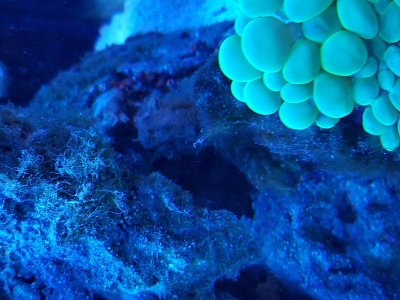
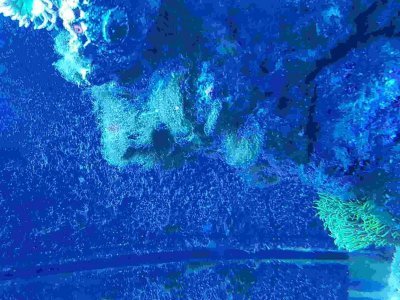
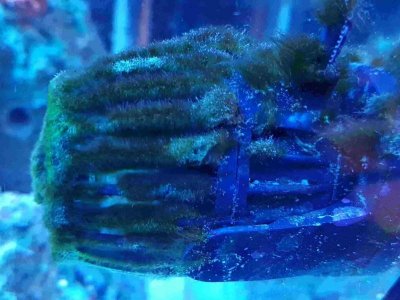
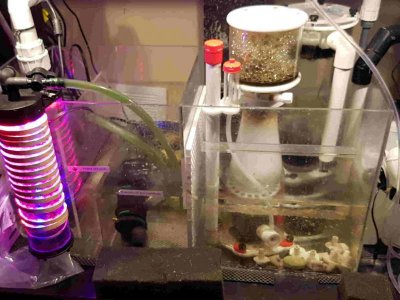
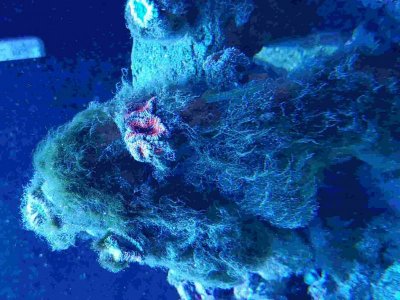
- 90 Gallon Tank with 20 gal Sump water changes every 2 weeks to 2.5 weeks at 20-25%
-6 bulp ATI Sunpower (5 Blue+ and 1 coral+ running from 10am to 7pm) and 1 reefbrite from 3pm to 10pm
- 2x MP8 and 1050gal/hr DC return pump
- Bubble Magus Curve 5 Protein skimmer
Temp: 76.5 F "“ 78F
Alkalinity: 5.7 (Salifert)
pH: 8.25ish (Salifert)
SG: 1.026 (refractometer)
Calcium: 400 (Salifert)
Mag: 1290 (Salifert)
Nitrate: 2 (Salifert)
Phosphate: 0 (Salifert)
Amonia: 0 (Salifert)
-Using Rodi water and Water circulation is very good. Aquaforest reef salt in a box
- Filter floss in overflow changed every 4-5 days, filter floss in bubble trap changed weekly
-Dosing 2 ml Alkilinity 1x/day and 5ml Nopox 1x/day
-1 DIY Cheato reactor 24 Hrs for the last 3 weeks
-1 Ultra High Capacity GFO (Phosfiltrum) in a bag approx.. 75g for 1 month now had Chempur blue running in a bag in media reactor previous month.
-Added chemiclean approx. 2 months ago for red slime algae had 3 or 4 25% water changes since then
- Fish seem ok but hungry as of late really reduced feeding"¦..3 clowns, 2 wrasses, 1 yellow tang, 1 yellow spot sand sifting Goby , 1 Mandarin Goby, Two Anthiest,4 blue Cromis, 1 Yellow belly Blue Tang, 1 Blood shrimp, 2 Peppermint shrimp, Hermit crabs approx. 12 dwarf , 1 large, 5 Turbo snails, 1 anemone crab(recently lost a lawnmower blenny and a sea hare within days of each other and only had for 2 weeks)
Corals are dying and getting choked out
Please let me know if any other info is required and thanks in advance for any help....Much appreciated.





